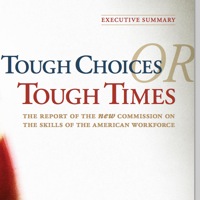As a life-long NYS educator, the NY Times article “Warning Signs Long Ignored on New York’s School Tests” came as no surprise. I’ve been posting on the impact of NCLB-driven standardized testing for years.
While business leaders and politicians lauded the success of the corporate-inspired standards movements, teachers knew that the impressive gains in student achievement were an illusion. As the NY TImes piece reports, for the last decade, a generation of NY students has been force-fed a steady diet of test prep designed to ready them for predictable tests.
“The fast rise… of New York’s passing rates resulted from the effect of policies, decisions and missed red flags that stretched back more that 10 years … The process involved the direct warnings from experts that went unheeded by the state and [NY] city administration that trumpeted gains in student performance… It involved the state’s decision to create short, predictable exams… making coaching easy…” NY TImes October 11, 2010
NCLB sanctions have closed failing schools that had persisted for years as “drop-out factories.” But we’ve paid a high price for accountability as measured by standardized tests. School were re-tooled to serve the needs of the test. Scarce funds were diverted to vendors who peddled programs guaranteed to improve student achievement. Creative teachers were mandated to drop the “fluff” and teach to the test, while lecture-driven teachers droned on affirmed that it was the best way to ensure student success. Instructional time was devoted to what was tested – reading and math – so students were routinely pulled from art and music for “remediation.” A triage mentality set in among administrators who thought it wisest to focus disproportionate resources to student on the cusp of meeting standards to the detriment of other performance levels.
Of course the ones who suffered most were the students. They were forced to spend long hours engaged in an extended exercise in remembering what they were told, then practice it at their desk (or as homework) in preparation for the opportunity to give it back on the test (generally in the same form they had received it). Instead of exploring their interests, students served largely to produce performance statistics that educators could slice into measurable demographic sub groups.
While NCLB began with the admirable goal of narrowing demographic performance gaps and putting an end to sorting kids on the “bell curve,” test policy has set a course that defines student achievement in manner largely out of step with the skills our students will actually need to successful. Ironically, while our students spend endless hours prepping for predictable tests, the demand for routine skills has largely disappeared from the workplace. Anyone know of a meaningful and rewarding career that looks like filling out a worksheet?
Our kids are inheriting a world with a host of problems that will require some out-of-the-box solutions. Their success will be contingent on their ability to function independently in ever-changing situations as fluid, adaptable, and reflective thinkers. Our classrooms should be refocused on student creativity. But for now our education policy is still aimed at NCLB’s quixotic goal of all students reaching proficiency on standardized tests. Unless we institute more genuine assessments, our measures of student achievement will be as inspiring as a steroid-tarnished home run record.
Image Flickr / Jason





